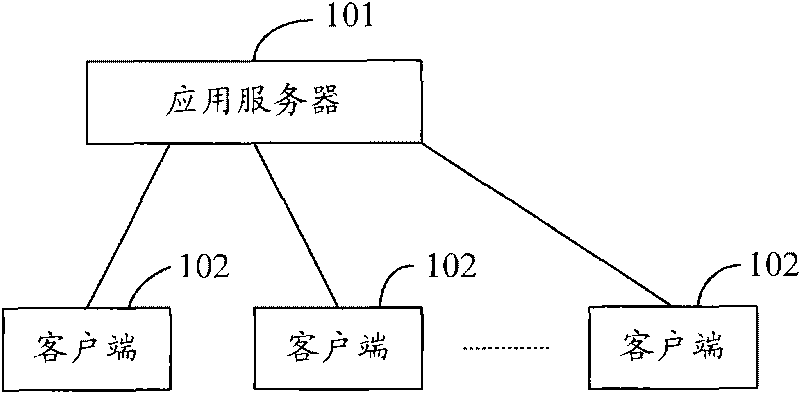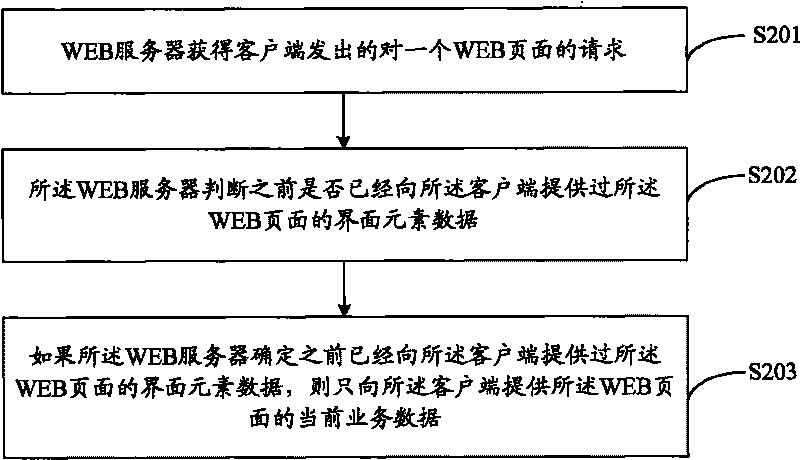Method for providing WEB page data, WEB server and WEB application system
A WEB server and page data technology, applied in the network field, can solve the problems of wasting bandwidth resources and large data volume, and achieve the effect of reducing data volume and avoiding waste
- Summary
- Abstract
- Description
- Claims
- Application Information
AI Technical Summary
Problems solved by technology
Method used
Image
Examples
Embodiment Construction
[0013] In order to make it easier for those skilled in the art to understand the present invention, some professional knowledge involved in the present invention is firstly introduced.
[0014] Interface element data of the WEB page: describe the controls that make up the WEB page, specifically, describe the position of the control on the WEB page, the front and rear background colors of the control, the font of the control, and the containment relationship between controls.
[0015] Business data on the WEB page: describe the specific content displayed on the WEB page, such as text information, pictures, videos, etc. on the WEB page.
[0016] Language information of the WEB page: describe the language style used by the WEB page, for example, indicate whether the WEB page uses Chinese or other languages.
[0017] Version information of the WEB page: describe the version information of the WEB page, such as version identification such as the version number of the WEB page.
[...
PUM
 Login to View More
Login to View More Abstract
Description
Claims
Application Information
 Login to View More
Login to View More - Generate Ideas
- Intellectual Property
- Life Sciences
- Materials
- Tech Scout
- Unparalleled Data Quality
- Higher Quality Content
- 60% Fewer Hallucinations
Browse by: Latest US Patents, China's latest patents, Technical Efficacy Thesaurus, Application Domain, Technology Topic, Popular Technical Reports.
© 2025 PatSnap. All rights reserved.Legal|Privacy policy|Modern Slavery Act Transparency Statement|Sitemap|About US| Contact US: help@patsnap.com



